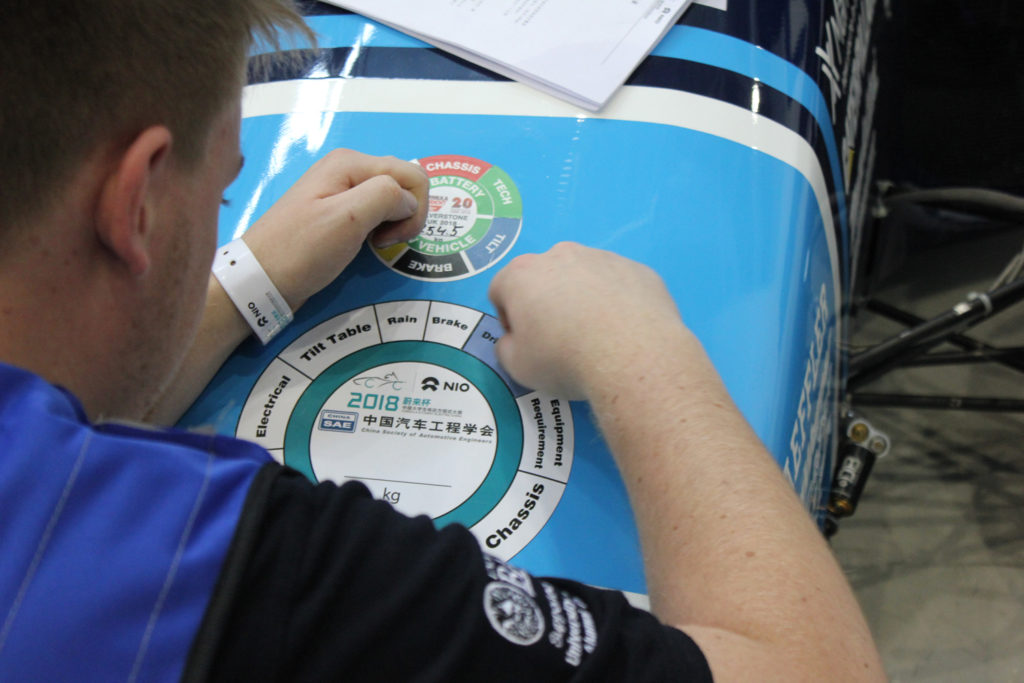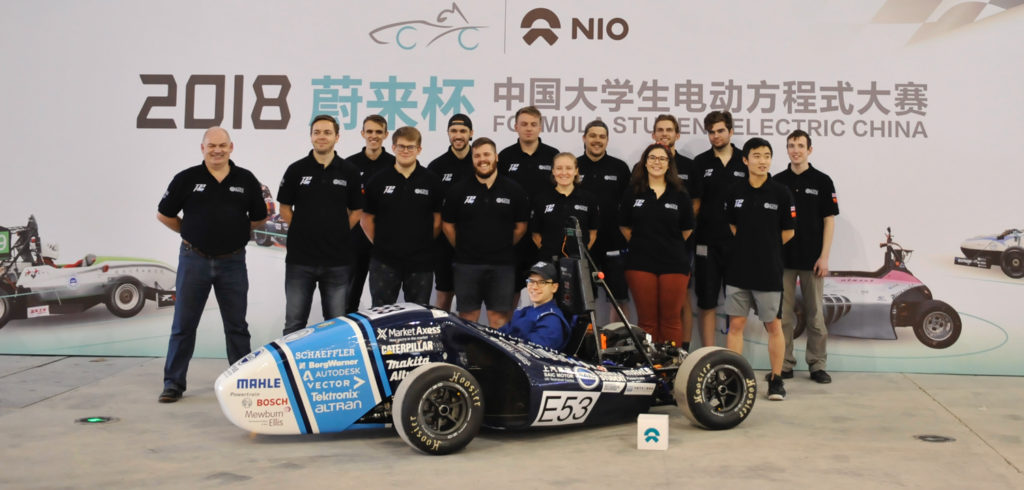While the growth of Formula E city-based pure electric racing has helped change the perception of electric cars as slow, short range and poor performance, Formula E is not the only series reflecting the increasing popularity of these cars.
The electric car has been welcomed with open arms by the Forum Student racing competition, a series of global events where university students design and build a racing car from scratch before racing against each other. It’s no coincidence, then, that the electric car world record 0-60mph time of around 1.5s is held by a team, AMZ (Academic Motorsports Club Zurich), consisting of students (from Switzerland’s ETH Zurich and the Lucerne University of Applied Sciences and Arts).
The top UK electric Formula Student team in 2017 and 2018 was the University of Bath electric car racing team – Team Bath Racing Electric (TBRe) – which has been competing in Formula Student UK since 2016.
The design of a Formula Student car is tightly controlled by a set of regulations, just as in any class of Formula racing, and the ‘formula’ defines criteria such as key dimensions of the vehicle, safety features such as the roll hoop, and detailed requirements for the electrical systems and accumulator (battery pack).
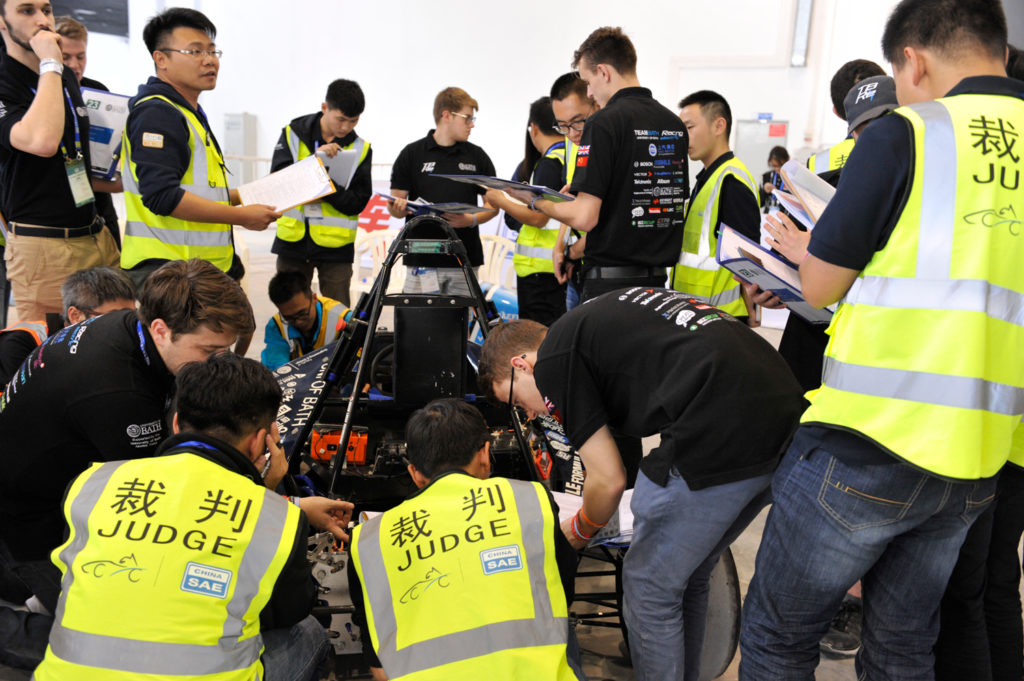 These are broadly consistent across the worldwide competitions, making it possible for teams to compete in more than one national event. It is quite common for teams to compete in other international events; for example, TBRe recently competed in Formula Student Electric China (FSEC), while the University of Bath internal combustion team (Team Bath Racing) regularly competes in European Formula Student events.
These are broadly consistent across the worldwide competitions, making it possible for teams to compete in more than one national event. It is quite common for teams to compete in other international events; for example, TBRe recently competed in Formula Student Electric China (FSEC), while the University of Bath internal combustion team (Team Bath Racing) regularly competes in European Formula Student events.
Teams are required to submit simulations of key structural components and materials, such as composites, chassis and suspension components, to demonstrate that the car will be safe and compliant with the regulations. TBRe’s philosophy is to focus on several key elements each year, rather than to attempt to do everything in one go, and to fundamentally improve the most important element of the car each time.
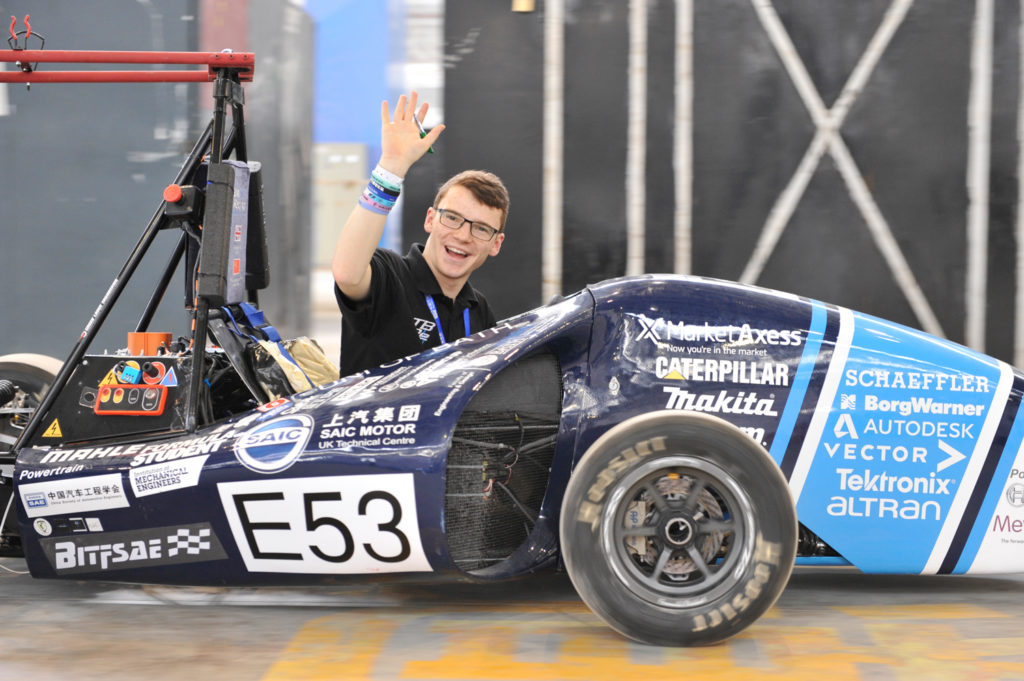
A specialism of the Team Bath Racing Electric team has always been its accumulator design and this year is no different, with a full custom design incorporating thousands of individual components (cells, battery management system, printed circuit boards, advanced composites and thermal management). With this level of detail, the team requires an overall project manager whose role is to coordinate the complete design, build and test cycle.
There are also several technical leads and specialists responsible for the major components in the car. Sub teams work on these individual elements, but, crucially, the communication and integration process calls for constant sharing of information to ensure that design decisions are not made that could compromise other aspects of the vehicle. The team uses online repositories to manage versions and integrate CAD designs for all members to access.
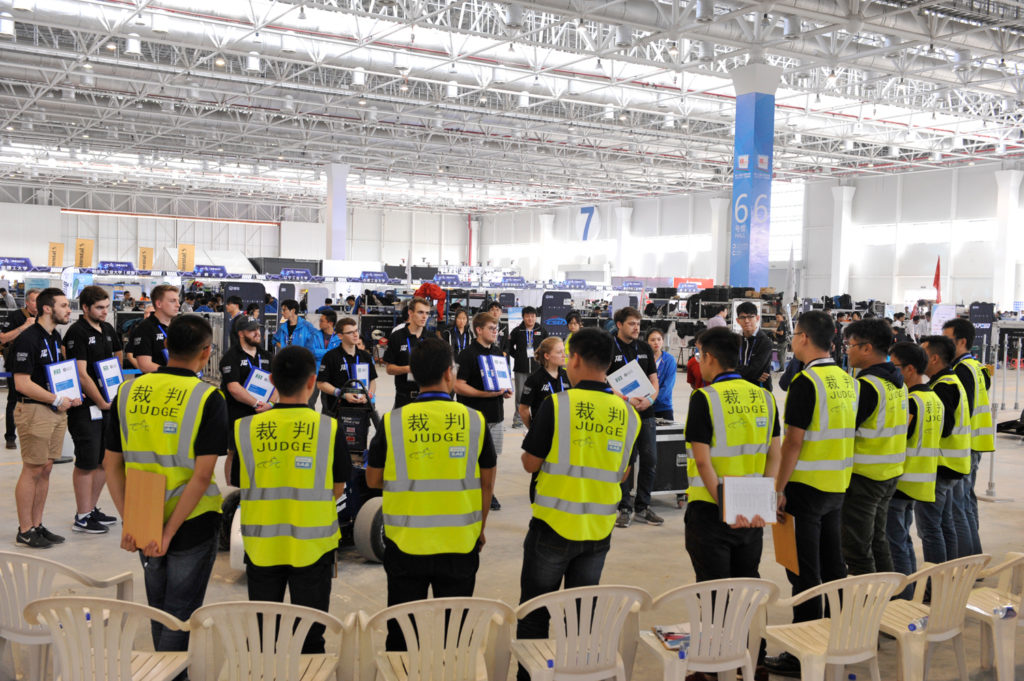
This year’s team has also used virtual reality in conjunction with the CAD models, enabling it to explore the vehicle layout to ensure that there are no issues with component fitting or assembly in advance of the final designs being signed off. This level of design is replicated across all the electrical and mechanical systems in the vehicle with software such as MATLAB for system level simulation, Altium and Cadence for PCB design, and finite element analysis on structural components using Ansys. Other specialist tools are used for specific design tasks throughout the vehicle.
The lab environment for TBRe has been configured with an integrated approach taken to the design, build and test cycle. Safety is also paramount with any complex vehicle build, so the team’s working area has been carefully partitioned into several zones to enable work to be undertaken safely and efficiently. Students are trained in the use of tools, especially hand power tools, and this is controlled formally with team members required to complete training before being allowed access to different working zones.
High-density battery packs, or ‘accumulators’, have hundreds of individual lithium-ion cells and when they are integrated together require high-voltage management and handling. TBRe has dedicated facilities for handling and storing its accumulator, and for testing the high-voltage aspects of the vehicle. Access to these is tightly controlled, with strict safety protocols.
Major component integration and testing takes place in dedicated specialist labs, and the team has a ‘hub’ where most design takes place along with the final vehicle assembly later in the process. Dirty jobs such as composites and mechanical manufacturing take place in dedicated workshops, ensuring the build room remains a clean and organized working environment. There are also specialist labs for electronic circuit assembly and testing. Most of these spaces are shared with other projects.
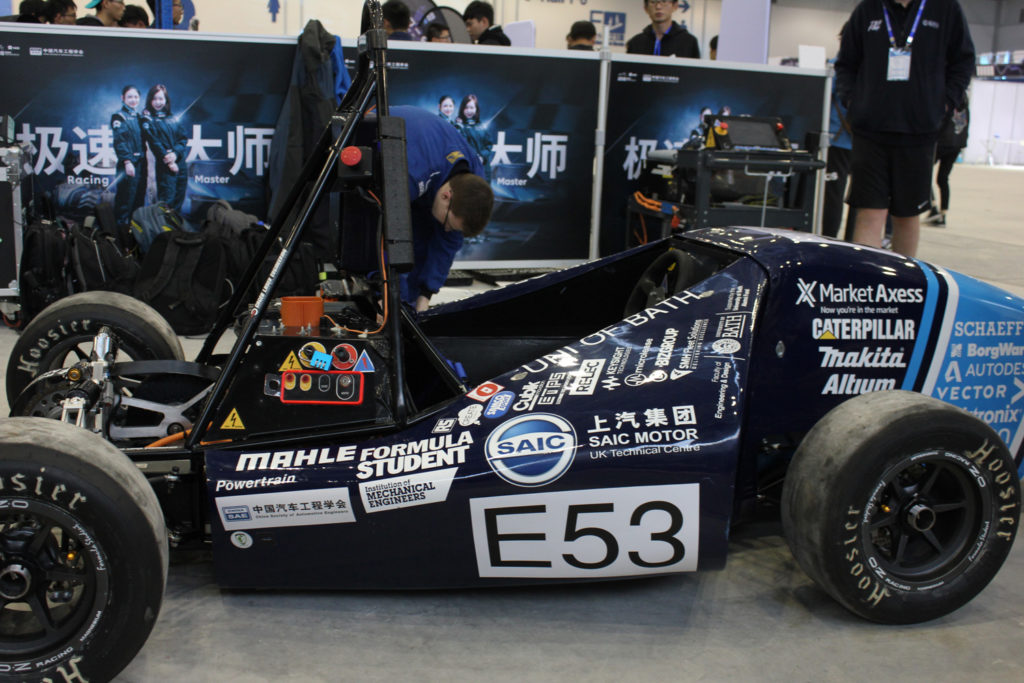 While all the major components in the final race car are tested individually (often as part of a student project), integration of the vehicle is scheduled for 12-16 weeks before the competition each year. Ideally it would be earlier in the year, but this provides a balance with the academic year and individual student project work. At this stage, the vehicle can begin testing.
While all the major components in the final race car are tested individually (often as part of a student project), integration of the vehicle is scheduled for 12-16 weeks before the competition each year. Ideally it would be earlier in the year, but this provides a balance with the academic year and individual student project work. At this stage, the vehicle can begin testing.
The testing of race cars gradually increases in intensity from early rolling tests to make sure systems such as the ECU, accumulator, drivetrain, suspension and steering are operational, to high-performance testing to evaluate the car’s ability to perform in the dynamic events in Formula Student. Testing can take place in local airfields (where there is lots of space for run-off and setting up test tracks using cones) or on proving grounds such as Bruntingthorpe in Leicestershire, with custom-made test tracks ideally suited to the relatively small Formula Student cars.
Extensive testing provides a huge amount of data for refining the vehicles, but also to give the team experience in moving the car to a remote location, managing issues away from the lab, debugging problems and building an efficient race team. Furthermore, it gives drivers invaluable time behind the wheel.
In 2018, TBRe had the huge privilege of racing in Formula Student Electric China in Zhuhai, which brought a whole new set of challenges for the team to manage. Having retained its position as the top UK electric Formula Student team, and after some time for testing, the team had to pack the car and the complete pit support environment into a container for shipping to China for this event. After a nerve-racking wait of several months, the team arrived in China to unpack the car in Zhuhai ready to compete in FSEC.
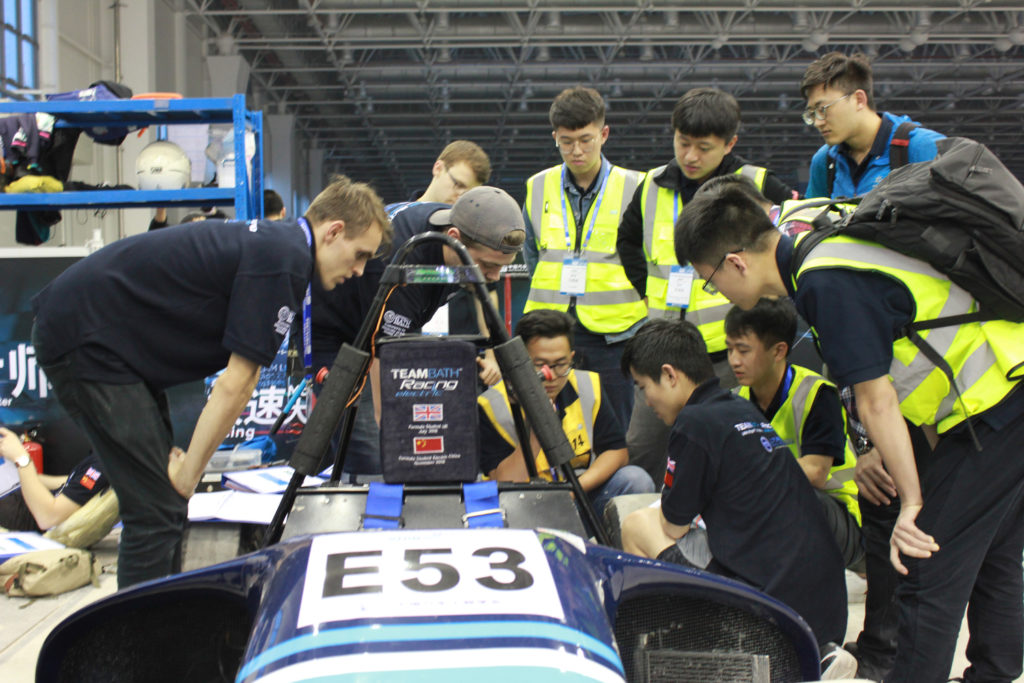
After initial inspection, the car looked in good shape, but after completing the static events and placing in the top 10 overall, it became clear that the journey had taken its toll on the accumulator. Another critical component, one of the printed circuit boards, had also been irretrievably damaged in transit. Luckily the team had access to the design repository and after sending the designs to a local company, the PCB was reassembled from scratch and 24 hours later the accumulator passed the scrutineering.
Unfortunately, the delay caused by the reassembly cost the team valuable points in the dynamic events. It was possible, however, to run the car on the endurance course where it performed to a high level, despite the lack of tuning. Overall the team finished in the top half of the final placings, achieving second place in the business event and eighth in the design event overall, which were excellent results for a first time at an overseas event.
The students in the team have learned a tremendous amount from all aspects of the process, design, build, test and race, which has shown them that even testing in advance cannot prepare for every eventuality. The clear takeaway from involvement in the Formula Student competition, especially in more than one event, is that overcoming adversity, solving problems and still continuing to race reinforces students’ technical ability, along with resilience, adaptability and resourcefulness, none of which can be taught in a classroom.
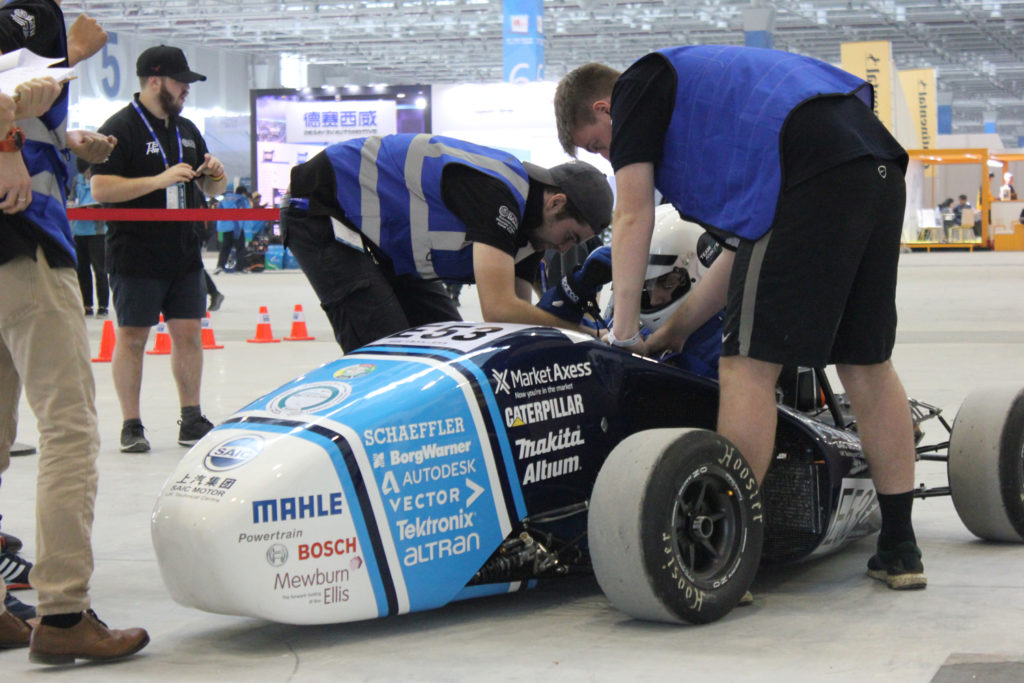 Interestingly, after the Formula Student Electric China competition, the students’ first instinct was not to look at the negative aspects of the experience, but rather to embrace the challenge and look at how to overcome those problems in the future.
Interestingly, after the Formula Student Electric China competition, the students’ first instinct was not to look at the negative aspects of the experience, but rather to embrace the challenge and look at how to overcome those problems in the future.
The plans for the 2019 TBRe car are now well underway, with the design finalized in autumn 2018 and major components being assembled or acquired in preparation for the major build phase having just begun. As well as competing in Formula Student UK in July 2019, the team hopes to compete in at least one European event in 2019, and would like to return to FSEC in China later in the year.
